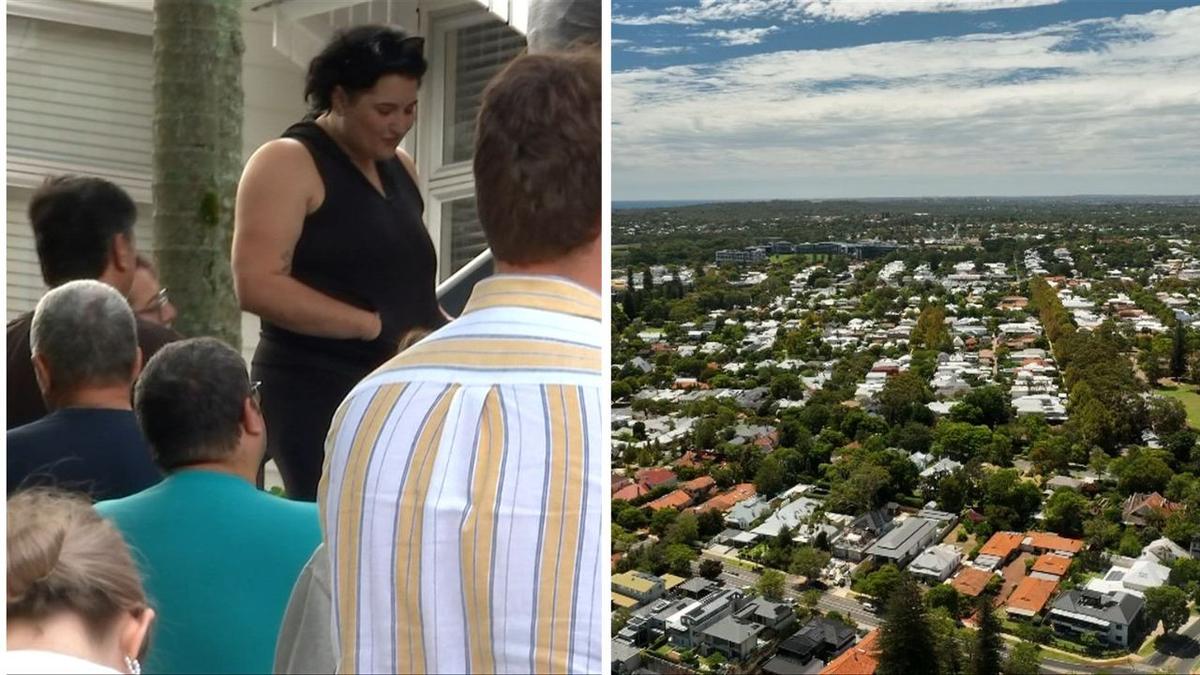The harsh reality of Australia’s rental market has been laid bare in a new report highlighting the pressure on struggling families.
Perth retained its position as the country’s most unaffordable capital for tenants, consuming 32 per cent of an average rental household’s income, the Rental Affordability Index (RAI) revealed.
WATCH THE VIDEO ABOVE: Perth again named most unaffordable city in Australia to rent.
Know the news with the 7NEWS app: Download today Arrow
Affordability in WA’s capital, which has a median weekly rental price of $700, was down 4 per cent from last year’s record low.
And the squeeze on residents out west is tighter than Sydney and Adelaide where a median rent consumes 30 per cent of the yearly budget.
“Since 2020, rents in Perth have climbed by more than 90 per cent, completely erasing the affordability gains made in previous years,” SGS Economics and Planning principal Ellen Witte said.
“Regional WA tells a similar story, once considered ‘Affordable’ in 2020, it has since slipped sharply, with rents now considered ‘Moderately Unaffordable’.”
When households devote more than 30 per cent of their income to housing, they are considered to be in housing stress because it limits what can be spent on food, power, health, education, travel and other needs.
The average rental household in all capital cities except the ACT faces “Unaffordable” to “Moderately Unaffordable” rents at the median rate.
“In all capital cities, low-to medium-income households have been largely locked out of inner-city areas and are now limited to outer suburbs where rents are still rarely acceptable,” the report by SGS Economics and Planning and National Shelter said.
The document’s release came on the same day the WA government announced construction had been finished on its East Perth Common Ground project, which will provide long-term homes for people sleeping rough or on low income.
The $70 million, 17-storey complex has 112 self-contained apartments, with half reserved for people experiencing homelessness.
It will feature wraparound support services and on-site management.
Shelter WA chief executive Kath Snell said the state government is making progress but “we need ambition that matches the scale of the crisis”.
“That means an additional 5000 social and affordable homes per year, capping rents, reining in short-stay rentals, ending no grounds evictions and improving minimum standards,” Snell said.
“This housing crisis is no longer confined to those on the lowest incomes, it’s climbing the ladder affecting working families.”
WA’s Housing and Works Minister John Carey said “we are throwing everything” at the issue “but we do face extraordinary population growth”.
Perth has retained its position as Australia’s most unaffordable capital for renters, while regional WA saw the steepest decline in affordability in the country, according to a new report. Credit: 7NEWS While rentals remain unaffordable in many parts of Australia, most capital cities have stabilised after several years of decline and green shoots are emerging, National Shelter chair John Engeler said.
For the first time in years, social and affordable housing stock appears to be increasing.
“The federal government has made vital steps towards turning this situation around, including delivering the Housing Australia Future Fund (HAFF) and committing to a Better Deal for Renters at national cabinet,” Engeler said.
“We’re already seeing the delivery of hundreds of homes under the HAFF, with thousands in the pipeline which will take pressure off the private rental market.
“We must now build on this momentum, including by expanding the construction of build-to-rent housing, to further improve affordability for renters.”
Federal government initiatives, such as the HAFF and Social Housing Accelerator, deliver 11,000 homes a year.
But the independent national housing agency, Housing Australia, estimated in 2021 that to plug the shortfall, 44,500 social and affordable homes would need to be delivered annually over a 20-year period.
Construction is complete at the Cook Government’s East Perth Common Ground project. Credit: 7NEWS The RAI report makes the case that not only is building more social and affordable homes better for struggling renters, it is also better for the economy.
But the federal government’s goal of lifting productivity is being hampered by pricey rents that make it harder for employers to attract workers.
“From cafes and hotels to hospitals and childcare centres, businesses across Australia are struggling to find staff because there’s nowhere affordable for them to live nearby,” Housing All Australians executive director Robert Pradolin said.
“Housing that people can afford is absolutely critical economic infrastructure and without it our national prosperity and productivity are being held back.”
The report recommends innovative ways to partner with the private sector to deliver new affordable housing, given the limited funds available to the government.
Housing Minister Clare O’Neil pointed to Swift Walk in Kensington, Victoria as an example of a project being delivered with HAFF and private sector financing, that would result in 272 social and affordable homes.
“Our government is building homes — for key workers, for families, for Australians who need extra help and support,” she said.

